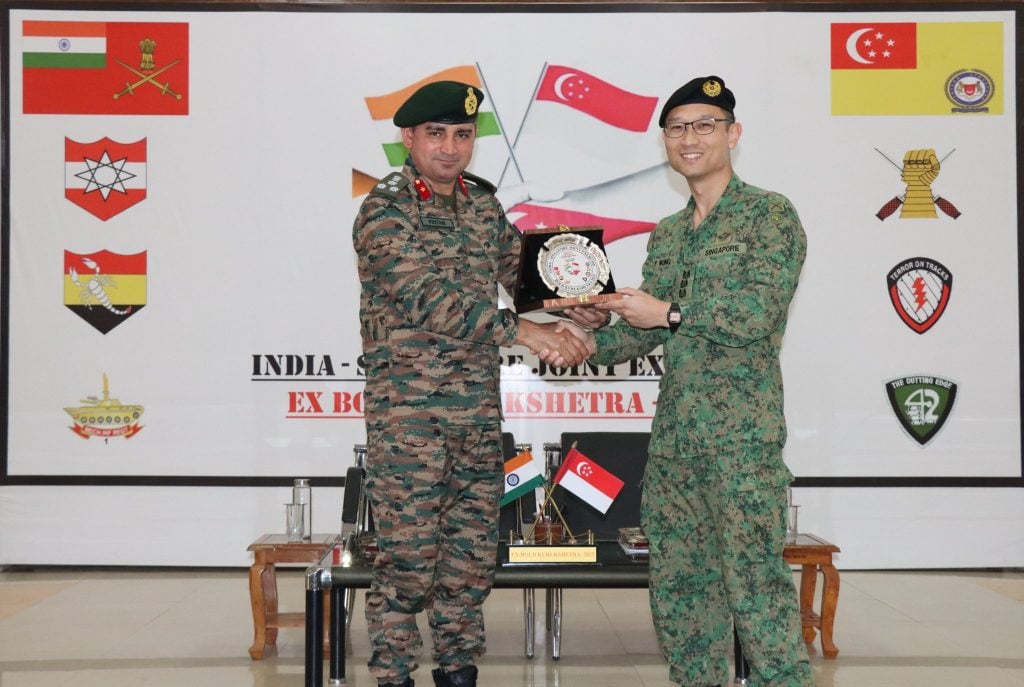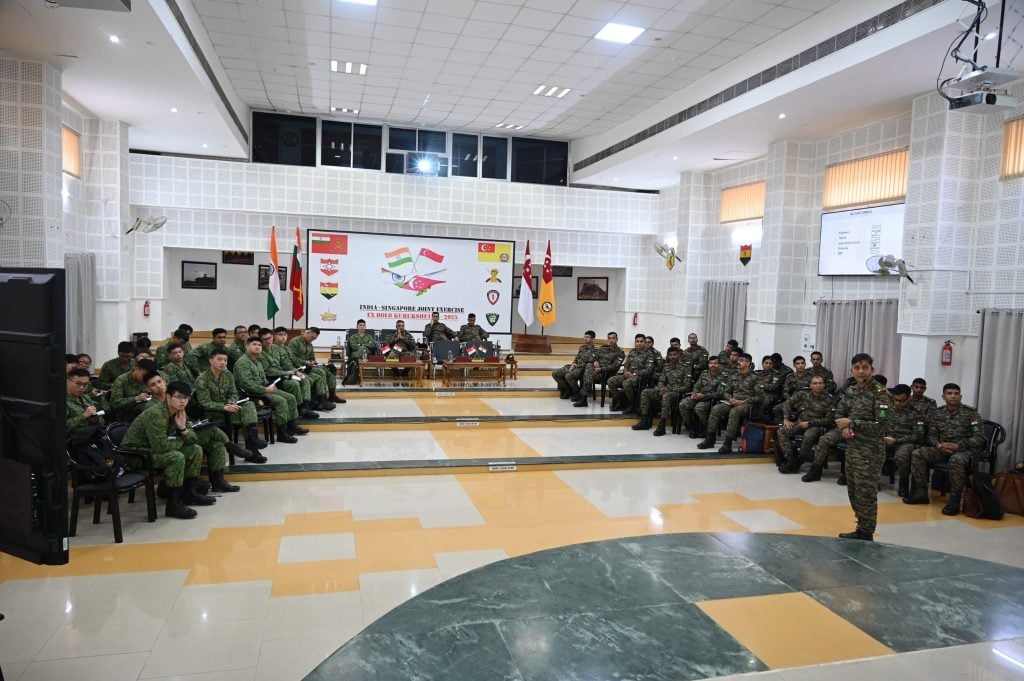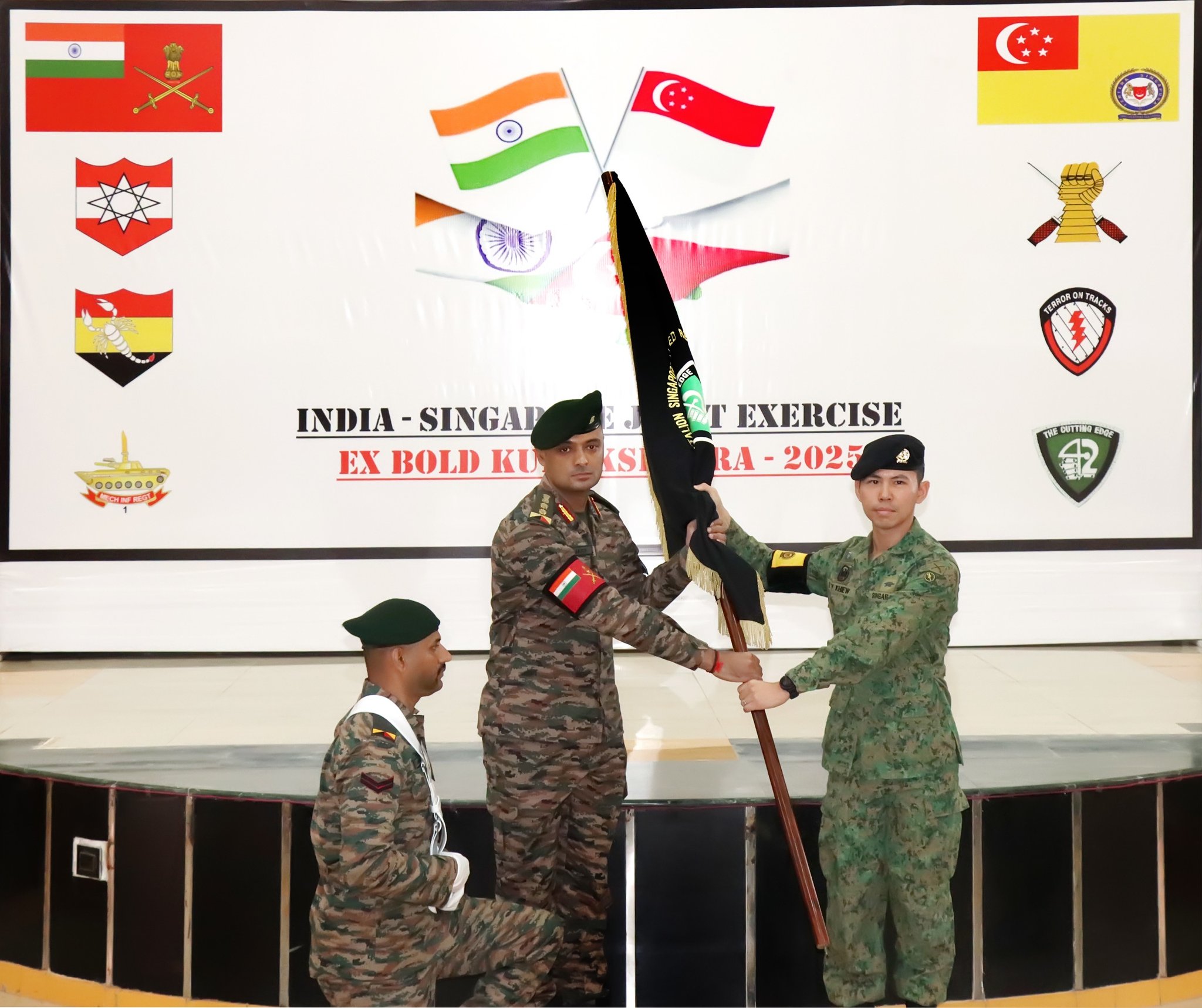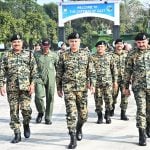The Indian Army and the Singapore Armed Forces (SAF) have launched the 14th edition of their joint military drill, Exercise Bold Kurukshetra, at a training facility in Jodhpur. The exercise, which began on July 27, continues a 20-year tradition of defense collaboration between the two nations and aims to boost joint operational capabilities under a United Nations mandate.
The opening ceremony featured a ceremonial plaque and flag exchange, symbolizing the enduring military cooperation between India and Singapore. Senior officers from both sides, including those from the Indian Army’s Bogra Brigade and the SAF contingent, attended the event and initiated the first phase of the exercise, which included tactical discussions and a table-top simulation to foster operational synergy.

In the coming days, troops will participate in complex field maneuvers, including live fire exercises and combat coordination drills designed to enhance interoperability in peacekeeping and conflict scenarios. The joint training focuses on responding to multi-domain threats, conducting joint planning, and executing coordinated responses in simulated conflict zones.
Established in 2003, Exercise Bold Kurukshetra has become a key pillar of India-Singapore military ties. The cooperation was further strengthened through the 2017 naval logistics agreement that allows both sides to access each other’s bases for refueling and supplies. According to a 2022 study published in the Journal of Defense Studies, joint training exercises such as this one have been shown to improve coordination in multinational operations by up to 30 percent.

This year’s exercise takes place against the backdrop of growing global peacekeeping challenges. With over 80,000 troops deployed worldwide in UN missions, India and Singapore’s focus on readiness and coordination underscores their commitment to global peace and security efforts.
Beyond joint army training, the India-Singapore strategic partnership includes a wide range of defense collaborations, from maritime security to joint naval drills and emerging technology development. These initiatives are part of a broader framework laid out under the Comprehensive Economic Cooperation Agreement (CECA) and other bilateral strategic pacts.













